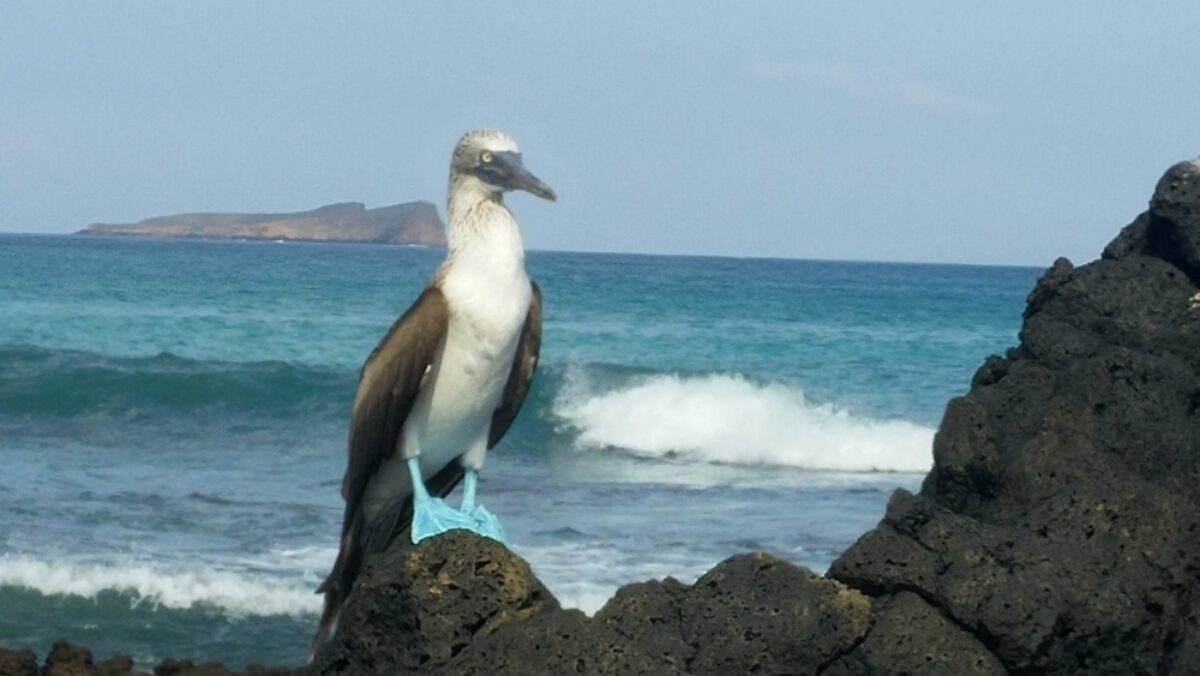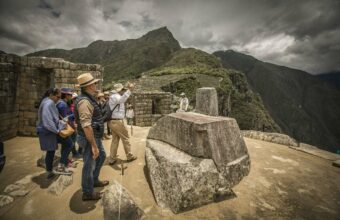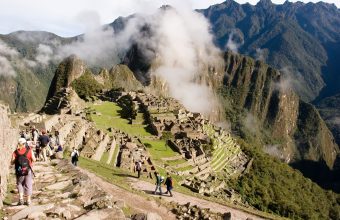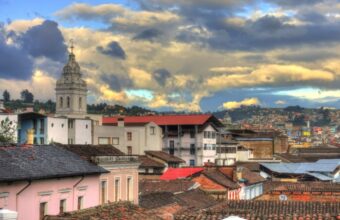The Best Time To Visit The Galapagos Islands
The best times of year for wildlife and conditions
While the Galapagos Islands’ climate can be roughly divided into two seasons, both the weather and the wildlife can be enjoyed year-round.
Visit the Galapagos Islands during the cool/dry season (June-November) for cooler weather and an abundance of marine life and nesting birds, or the warm/wet season (December-May) to see mating turtles, tortoises and sea lions.

May is a great month to see the Galapagos' famous blue-footed booby
Best months: December to May
Peak tourism season: July, August and Christmas/New Year
Best months for wildlife: March to May
Galapagos Islands’ seasons
The cool/dry season runs roughly from June to November. The Humboldt Current brings garúa, a fine sea mist, and cooler weather that ranges from 19 to 27 °C (67-81 °F).
The currents also bring nutrients to the ocean surface, attracting a plethora of marine life and underwater activity.
Sea conditions tend to be choppier and while there is more activity underwater, visibility is less clear for snorkelling and scuba diving.
December to May is the warm/wet season. Temperatures range from 22 to 30 °C (71-87 °F), sea conditions are calmer, there are frequent short showers but the skies are sunnier and the water is warmer. On land you’ll see plenty of wildlife and visibility is good for diving and snorkelling.
Be aware of the El Niño current, which affects the Galapagos Islands every five to seven years. This current of warm water can cause excessive rainfall and heavy flooding on the islands, and often has a negative effect on the region’s marine life. There is no way to predict when the current will strike next, although scientists are able to give an indication of how likely it is in a given year. While it is safe to visit the islands during El Niño, be prepared for heavy rainfall.
Best months to visit the Galapagos
January and the new year brings hot and humid weather to the Galapagos, with frequent showers. January is when green sea turtles begin to lay their eggs and land birds begin to nest. Look out for male marine iguanas changing colour to attract mates.
February brings warmer, wetter weather, with many of the islands’ wild inhabitants (such as sea lions and tortoises) beginning their breeding and nesting seasons.
March is a great month to visit for snorkelling due to the clarity of the water, and is one of the warmest months with highs of 30.5 °C (87 °F).
During March and April the flowers bloom in the archipelago, adding colour and contrast to the volcanic landscapes. March is also the month that the waved albatross returns to the islands in time for the summer breeding season.
By May, spring flowers are in bloom and the rainfall is beginning to recede. Look out for blue-footed boobies beginning their unusual courtship dance.
June signals the beginning of the colder, drier months known locally as the garúa. The weather creates a proliferation of plankton in the seas around the islands, making it a great time to watch penguins and albatross feeding. This is also the time to visit for whale-watching, with humpback whales and whale sharks spotted around the Galapagos.
July is peak tourism season. August is the coldest month to visit, but brings the benefit of seeing baby sea lions on the western and central islands. This is the time to visit to watch Galapagos penguins courting and mating on Bartolomé Island.
By November, the weather is beginning to warm up, with whales once again visible near the northern islands.
December is one of the best months to visit the Galapagos, with plenty of sunshine and warm water to swim and snorkel in. Visit to see giant tortoises hatching and albatross migrating. But book early – the Christmas period coincides with the South American holiday period, so cruises and lodges are booked well in advance.











